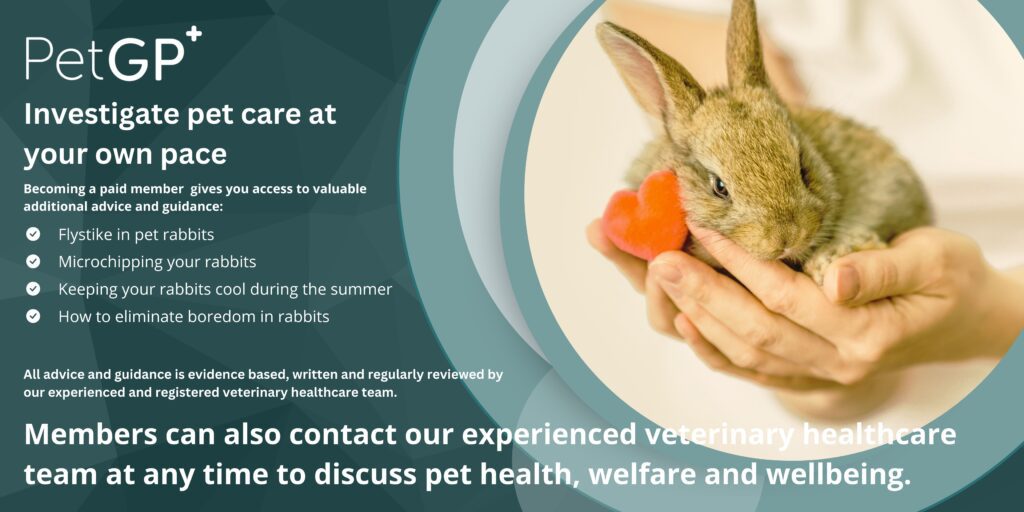What is appropriate behaviour for my rabbit?
What is appropriate behaviour?
Rabbits have been domesticated for food for over 2000 years, and as pets for over 200 years. Today, there are many different breeds, all with their own characters. Rabbits need to be able to express their natural behaviours. This is essential to avoid your rabbits becoming stressed or depressed. Having the correct husbandry is very important.
Natural and appropriate rabbit behaviours include running, jumping, exploring, socialising, foraging and eating, chewing and digging. Rabbits need to have the space, environment and companions to perform these behaviours. If they cannot behave normally, rabbits can develop abnormal repetitive behaviours or depression.
Understanding your rabbits’ needs and natural behaviours.
Before buying a rabbit, it is important to do some research on what environment is needed. Your rabbits environment must allow them to express their appropriate and natural behaviours.
A happy, contented rabbit will be:
- Active
- Moving around freely
- Exploring their surroundings
- Have their ears up
- Be looking around, foraging and interacting with other rabbits and people.
A stressed, scared or bored rabbit will:
- Sit in one place
- Have their ears flat to the body
- Not take any interest in its surroundings
- Not be socialising with other rabbits or humans.
Rabbit body language can be subtle and differs slightly with each rabbit. Observing your rabbits needs to be part of your daily rabbit-care routine.
Socialisation.
Rabbits are highly social and need the company of other rabbits. Mimicking this natural behaviour is essential for their wellbeing. Usually kept in pairs, they can also be kept in larger groups. All animals in a pair or group should be neutered – this will prevent breeding and reduce fighting. Bonded rabbits will groom each other, chase each other around and either stay close together or have time out on their own. They may also scuffle or hump each other (a sign of dominance).
Rabbits have a complex social structure. Mixed sex groups will have both male and female dominance hierarchies within it. Larger groups will be separated into smaller groups, with a group dominance hierarchy. Males mark and defend territory, while females move between groups but defend certain areas such as good nesting sites. The dominance hierarchy is renewed daily, in a pair or group of rabbits, aggressive chases and submission or even a scuffle can be seen at times. Rabbits frequently scuffle with minimal injury, but they can also fight aggressively and do a lot of damage to each other. These fights will need to be stopped to prevent serious injury.
Bonding rabbits
Because of the risk of serious fighting, the best way to bond rabbits is to keep youngsters from the same litter together. Neutering is essential for prevention of breeding, but it also reduces the risk of fighting within the social group.
Introducing unrelated rabbits must be done slowly and carefully, with close monitoring and observation of the rabbits’ body language. Most rabbits will fight at some point during bonding and will need splitting up quickly. Even when bonded, changes to their environment or a trip to the vet can trigger fighting.
Bonded pairs or groups should always be kept together, and any changes done slowly to allow adjustment to the social hierarchy.
Exercise and entertainment.
Rabbits need a large exercise area, minimum size of 3m long x 2m wide x 1m high. This must be available when they are active – from late afternoon through to the next morning (or permanently). There should be tunnels and hidey holes, toys to throw and hay and greens for foraging around the run. There can be platforms or shelves for the rabbits to jump onto or shelter underneath. Digging areas, litter trays and water sources should also be supplied. Bedded housing with two entrances are necessary to allow rest when needed. Rabbits need to be able to perform their normal behaviours to protect their mental wellbeing and reduce stress. Their environment must provide room for exercise, foraging, playing with companions and places to go if they need to be alone.
Chewing.
Rabbits’ teeth grow continuously, so rabbits must gnaw and chew tough, fibrous foods to prevent overgrowth. Branches from willow, fruit trees or other edible trees can be offered for the rabbits to de-bark with the incisors. Long fibre such as hay is vital for chewing. It will wear the back teeth down and aid gut health. Feeding hay also satisfies the natural behaviour of foraging and protects your rabbits’ mental health.
A rabbit with nothing suitable to chew will instead chew the cage bars or wood, furniture, door frames or carpet in its frustration. Rabbits with an inadequate environment can also develop abnormal chewing behaviours as a stress relief.
Appropriate toileting behaviours.
Rabbits usually toilet in one place, so are easy to toilet train indoors. Faecal pellets can be deposited around a territory boundary if the rabbits feel threatened. Rabbits will mark territory with urine if there are changes made. They will also urinate on their companions as a sign of dominance or onto a new rabbit that is being introduced.
Spraying urine is linked to sexual behaviour or can be linked to aggression. Usually seen in entire male rabbits, females also spray. Rabbits generally spray their companions, their territory borders and the people that handle them. Neutering your rabbits will reduce spraying. If the behaviour has become a learned response, the rabbits will continue to spray after neutering.
How to encourage appropriate behaviours.
Provide your rabbits with an appropriate environment. This must provide enough room for exercise, hiding places and room for exploration, digging and companionship. This will encourage the rabbits to perform their natural behaviours. If the rabbits persist in unwanted behaviours, gentle training can be used to try and break the habit.
A furniture chewing rabbit, for example, can be gently moved away and offered natural sticks to chew instead. A persistent offender can be blocked from access until the sticks become the favourite chewing object. Never shout or be rough with rabbits. They need to trust you to interact with you, so fear should not be part of their training. Target training and clicker training can be used to train your rabbits.
Training must always be using positive reward based in method. This will keep the rabbits engaged and keep them mentally active.
When to be worried.
If a normally sociable, active rabbit becomes lethargic, reluctant to move or disinterested, it is advised to have a vet check. This will rule out underlying health problems. A gentle rabbit that suddenly becomes aggressive may be in pain or unwell, so, again, a vet check is advised.
If a bonded pair or group is disturbed and begins to fight, then the rabbits need to be separated straight away. Where a rabbit has been taken out and put back, it may help to rub the rabbits with older bedding from the shared housing before it is put back into the enclosure, so they all smell the same. If that doesn’t help, then bonding them again will have to be attempted from scratch. This will take time and patience, and some rabbits can never go into the same pair or group as before.
Who can help.
Your vet will always be a great first call. They will take a full history and physically check your rabbits. They will also discuss their environment and routine. If there is no obvious reason for the adverse behaviour, then there are rabbit behaviourists available. The APBC (Association for Pet Behaviour Counsellors) has registered therapists who will work with rabbits, so are worth a call. There is also lots of advice available online from other reputable sites. Some we recommend are the RSPCA, the PDSA, the Rabbit Welfare Association and the Blue Cross.
Understanding your rabbits’ environmental requirements, providing them with company and lots to do and being able to read their body language will help you to spot any behavioural changes early and act on them promptly.
The pleasure that you get from watching a rabbit enjoying itself playing with a bit of cardboard, or snuggled with their companion, makes giving them the environment they need worthwhile.

